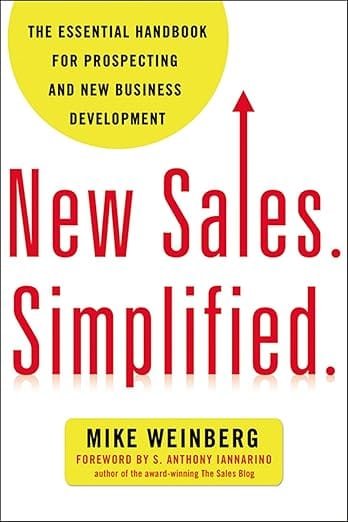When the story is unclear the customer always feels it first

Most sales leaders worry when a rep struggles to tell the story. It shows up in weak meetings, shallow discovery and conversations that never really land. It is easy to blame the salesperson for this. It is harder to admit that the real issue often starts much earlier and much higher.
A team cannot communicate a story that leadership has not defined with clarity. And they cannot target the right accounts when the strategy keeps shifting or remains vague. When the narrative is unclear, every salesperson builds their own version. Some tell a technical story. Some tell an emotional story. Some pitch features. Some talk around value without ever reaching it.
This is not a messaging issue. It is a leadership issue.
When strategy is fuzzy salespeople improvise
Improvisation sounds creative but in sales it usually becomes chaos.
People chase whoever reacts.
They present whatever they remember.
They focus on what they understand best, not what the customer values most.
If you look at the sixteen not so sweet reasons why salespeople fail, several of them point back to this simple truth. Most reps do not suffer from lack of intelligence. They suffer from lack of direction. Without direction they naturally drift to the easiest story, not the strongest one.
And customers sense this immediately.
A weak story signals uncertainty.
Uncertainty signals risk.
Risk kills deals.
Leaders shape the story long before the team tells it
A compelling narrative does not appear by accident.
It comes from leadership decisions.
It comes from clarity about target accounts.
It comes from understanding the customer’s world better than the customer.
It comes from choosing what not to pursue.
It comes from stripping the pitch down to what actually matters.
If leadership does not define the story, the market will.
And the market is rarely kind.
My view on how to rebuild narrative clarity
Here are the practical moves I believe leaders must take if they want their team to communicate with confidence and purpose.
1. Decide who you really serve
A clear target list removes 80 percent of confusion.
It prevents energy from leaking into unqualified pursuits.
It forces sharper stories because you speak to fewer worlds.
2. Define the value in simple customer language
If your team cannot explain why your customer wins by choosing you,
they will default to describing features.
This is where deals die.
Write the value down.
Make it simple.
Repeat it often enough that it becomes muscle memory.
3. Show the team how to tell the story
Walk them through examples.
Show what a strong opening sounds like.
Show how to connect discovery with value.
Show how to close a meeting without pressure.
Your example becomes their standard.
4. Use KPIs only as a mirror
Narrative cannot be measured through volume.
But some signals help you understand whether clarity exists.
I recommend a few simple indicators:
- Percentage of meetings with ideal customer profiles
- First meeting win rate
- Discovery depth signals
- Consistency of the value message across reps
These KPIs should never shape the story.
They simply reveal if your story is landing.
The story is the strategy in disguise
When the story is weak, the strategy is usually weak.
When the story is inconsistent, the leadership is inconsistent.
When the story changes every quarter, the team loses trust.
A strong story is not about charisma.
It is about conviction.
Conviction comes from clarity.
Clarity comes from leadership.
A question every sales leader should sit with
If every rep on your team tells a slightly different story
does this reflect their behaviour
or does it reflect your direction?
The answer is almost always uncomfortable.
And that is exactly why it matters.
Disclaimer
The content of this post is based on Mike Weinbergs books. Buy and read them here.
